ASM Pacific Technology Bundle
Who Really Owns ASM Pacific Technology?
Understanding the ownership structure of a company is crucial for investors and strategists alike. Major shifts in ownership, like IPOs or acquisitions, can dramatically alter a company's future. For ASM Pacific Technology SWOT Analysis, now known as ASMPT, this evolution from a division of ASM International to a publicly traded entity offers a fascinating case study.
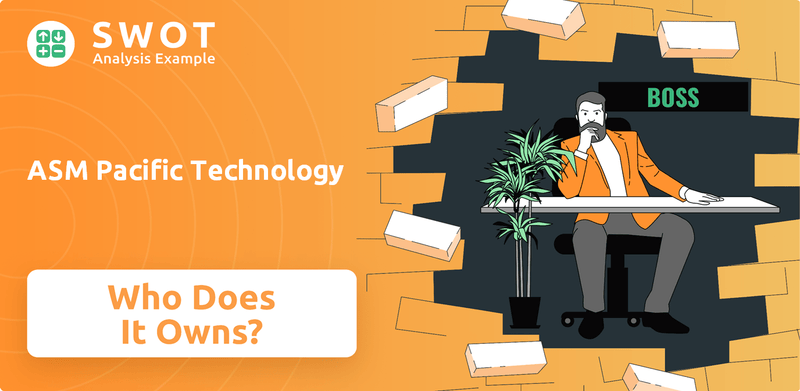
From its humble beginnings in 1975 as ASM Asia, the Asian marketing arm of ASM International, ASMPT has transformed into a global powerhouse. This exploration of ASM Pacific ownership will unveil the key players and their influence on ASM PT, examining how the ownership structure has shaped its journey. We'll uncover the major shareholders and the impact on the ASM Pacific Technology market cap, providing insights for anyone asking Who owns ASM and how it impacts the ASM Pacific stock.
Who Founded ASM Pacific Technology?
The story of ASM Pacific Technology (ASM PT) began in 1975, co-founded by Arthur del Prado, the visionary behind ASM International, and Patrick Lam, an electrical engineer. This marked the genesis of what would become a significant player in the semiconductor industry, initially serving as an Asian sales branch for ASM International. The early focus was on selling semiconductor materials and equipment.
Early operations involved selling semiconductor materials and encapsulation equipment. By 1977, ASMPT expanded into small-scale production, manufacturing mold bases and custom-designed trim and form tools. This expansion laid the groundwork for its future growth and diversification within the semiconductor sector. This period was crucial for establishing its manufacturing capabilities.
A pivotal moment occurred in 1979 when ASM PT made two key decisions: acquiring a property for lead frame production and purchasing a wire bonder manufacturing business. These moves were instrumental in shaping the company's trajectory. The company's early growth was primarily financed through retained earnings and bank loans. While specific equity splits or shareholdings at inception are not publicly detailed, ASM International initially held a majority stake in ASMPT, owning 51% in 1997.
Arthur del Prado, founder of ASM International, and Patrick Lam, an electrical engineer, co-founded ASM Pacific Technology.
Initially, ASMPT functioned as an Asian sales branch for ASM International, focusing on selling semiconductor materials and encapsulation equipment.
By 1977, ASMPT expanded into small-scale production of mold bases and custom-designed trim and form tools.
In 1979, ASMPT acquired a property for lead frame production and a wire bonder manufacturing business.
The company's early growth was primarily financed through retained earnings and bank loans.
ASM International initially held a majority stake in ASMPT, owning 51% in 1997.
Patrick Lam served as Managing Director and CEO from inception until his retirement at the end of 2006, and Arthur del Prado served as Chairman. The ownership structure of ASM Pacific Technology (ASM PT) has evolved over time, with ASM International initially holding a majority stake. The company's ownership structure is a crucial aspect of understanding its history and development. For more insights into the company's business model, you can explore the Revenue Streams & Business Model of ASM Pacific Technology.
- Arthur del Prado, the founder of ASM International, and Patrick Lam co-founded ASM Pacific Technology.
- ASM International initially held a majority stake in ASM Pacific Technology.
- Patrick Lam served as Managing Director and CEO from 1975 until his retirement in 2006.
- The company's early growth was primarily financed through retained earnings and bank loans.
ASM Pacific Technology SWOT Analysis
- Complete SWOT Breakdown
- Fully Customizable
- Editable in Excel & Word
- Professional Formatting
- Investor-Ready Format
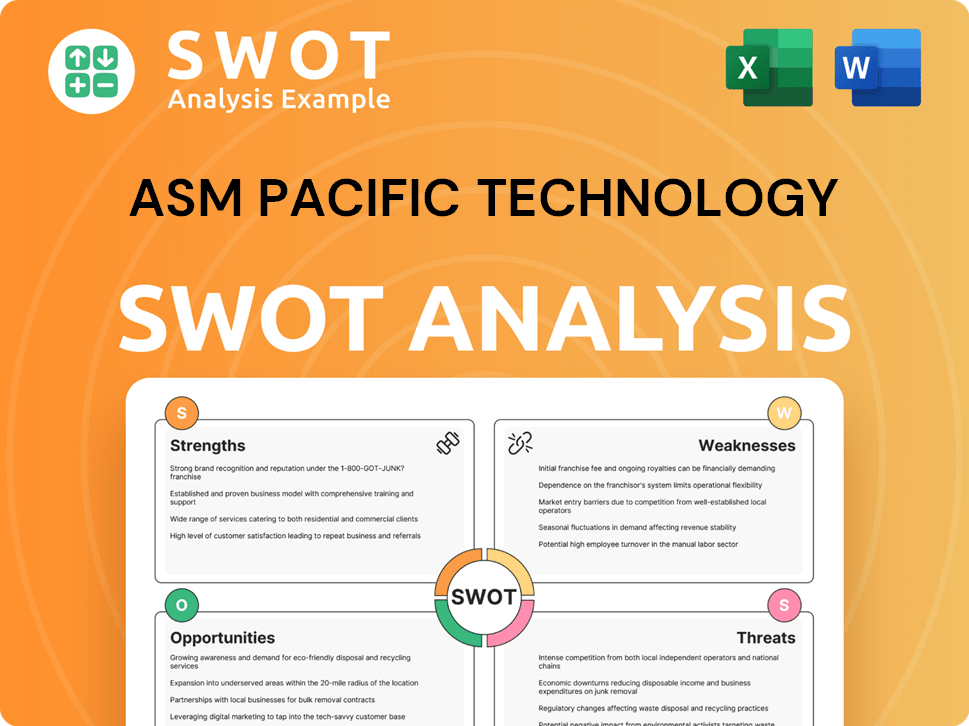
How Has ASM Pacific Technology’s Ownership Changed Over Time?
The ownership structure of ASM Pacific Technology (ASM PT) has evolved considerably since its inception. A pivotal moment occurred in January 1989 when ASMPT went public, listing on the Hong Kong Stock Exchange to secure funds for expansion. This initial public offering (IPO) marked a significant shift in the company's ownership, making shares available to the public and broadening its investor base. This move allowed ASMPT to access capital markets for future growth initiatives.
Over time, ASM International, the parent company, gradually decreased its stake in ASM PT. By 2013, ASM International sold 11.9% of ASMPT, losing its status as a majority shareholder. Further reducing its holdings, ASM International's ownership decreased to 25% by 2018. As of April 2025, ASM International remains a minority shareholder in ASM PT, reflecting a strategic shift in the company's ownership dynamics.
| Shareholder | Shares Held | Percentage (as of Date) |
|---|---|---|
| Fidelity Funds - Global Technology Fund | 27,982,918 | 6.72% (October 30, 2024) |
| SMALLCAP World Fund, Inc. | 17,186,515 | 4.13% (March 30, 2025) |
| Vanguard Total International Stock Index Fund | N/A | N/A (Early 2025) |
Currently, major institutional shareholders play a significant role in ASM Pacific Technology's ownership. As of October 30, 2024, Fidelity Funds - Global Technology Fund held 6.72% of the shares, equivalent to 27,982,918 shares. SMALLCAP World Fund, Inc. held 4.13%, or 17,186,515 shares, as of March 30, 2025. Other institutional investors include Vanguard STAR FUNDS-Vanguard Total International Stock Index Fund and MFS International New Discovery Fund. Understanding the ownership structure, including major shareholders, is crucial for investors looking into the growth strategy of ASM Pacific Technology.
ASM Pacific Technology's ownership structure has evolved significantly since its IPO in 1989.
- ASM International, the parent company, has gradually reduced its stake.
- Major institutional shareholders include Fidelity Funds and SMALLCAP World Fund.
- As of June 2025, ASM PT's market capitalization is approximately US$2.88 billion.
ASM Pacific Technology PESTLE Analysis
- Covers All 6 PESTLE Categories
- No Research Needed – Save Hours of Work
- Built by Experts, Trusted by Consultants
- Instant Download, Ready to Use
- 100% Editable, Fully Customizable
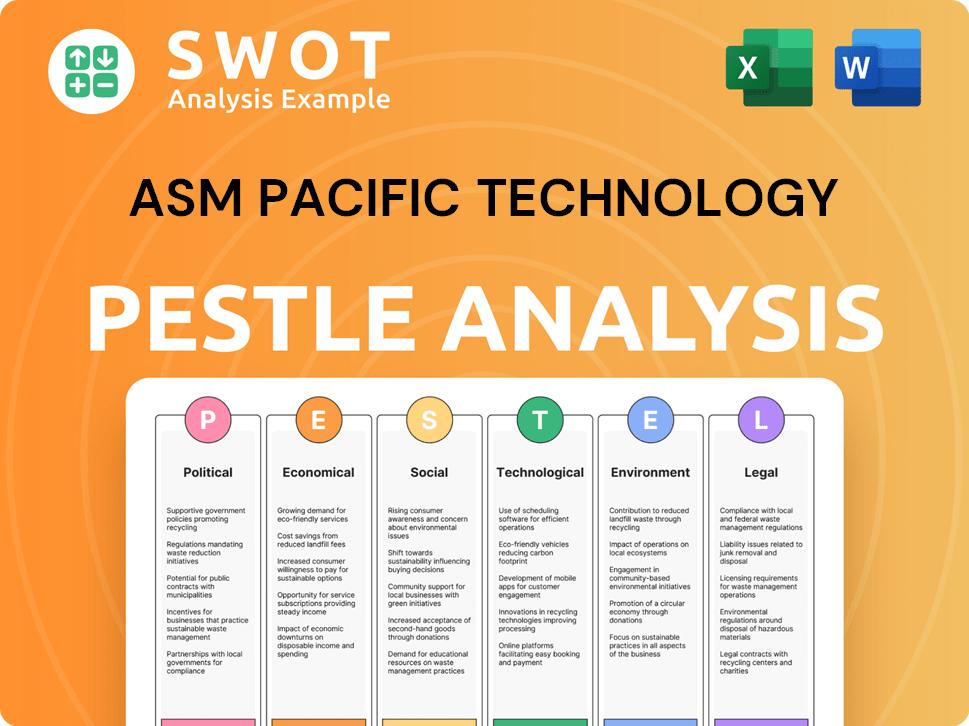
Who Sits on ASM Pacific Technology’s Board?
The current board of directors of ASM Pacific Technology (ASM PT) significantly influences the company's governance and strategic direction. While specific details about each board member's representation (major shareholders, founders, or independent seats) are not always fully available in public summaries for 2024-2025, the company's annual general meetings (AGMs) address key governance issues. For example, the AGM held on May 7, 2025, included the appointment of an Independent Non-Executive Director. This shows the company's commitment to maintaining a diverse and independent board.
Understanding the board's composition is crucial for investors looking at ASM Pacific ownership and the company's future. The board's decisions directly impact the company's performance and its ability to adapt to market changes. The board's structure helps in overseeing the company's operations and ensuring that the interests of all stakeholders are considered. The board plays a vital role in shaping the company's strategic direction, which includes decisions about investments, acquisitions, and overall business strategy.
| Board Member | Role | Notes |
|---|---|---|
| Details not fully available in public summaries for 2024-2025 | Various | Includes Executive and Non-Executive Directors |
| Independent Non-Executive Directors | Oversee and provide independent perspectives | Appointed through shareholder votes |
| Major Shareholders Representatives | Represent the interests of significant owners | Influence strategic decisions |
The voting structure of ASM PT, common for publicly listed companies on the Hong Kong Stock Exchange, generally follows a one-share-one-vote principle. Resolutions at AGMs, such as adopting financial statements, declaring dividends, and reappointing auditors, require shareholder approval. The company's articles of association and Hong Kong listing rules govern specific voting thresholds for different types of resolutions. There have been discussions in recent years regarding potential privatization of ASM PT, which would involve significant changes to its ownership and voting power. For more insights into the company's strategic direction, consider reading about the Growth Strategy of ASM Pacific Technology.
The board of directors at ASM PT plays a crucial role in guiding the company's strategic decisions and ensuring good governance. Shareholder voting rights are based on a one-share-one-vote system. Key decisions, such as appointing directors and approving financial statements, are subject to shareholder approval.
- Board composition includes independent and executive directors.
- Voting is primarily based on a one-share-one-vote system.
- AGMs are essential for shareholder engagement and decision-making.
- Discussions about privatization could significantly alter ownership.
ASM Pacific Technology Business Model Canvas
- Complete 9-Block Business Model Canvas
- Effortlessly Communicate Your Business Strategy
- Investor-Ready BMC Format
- 100% Editable and Customizable
- Clear and Structured Layout
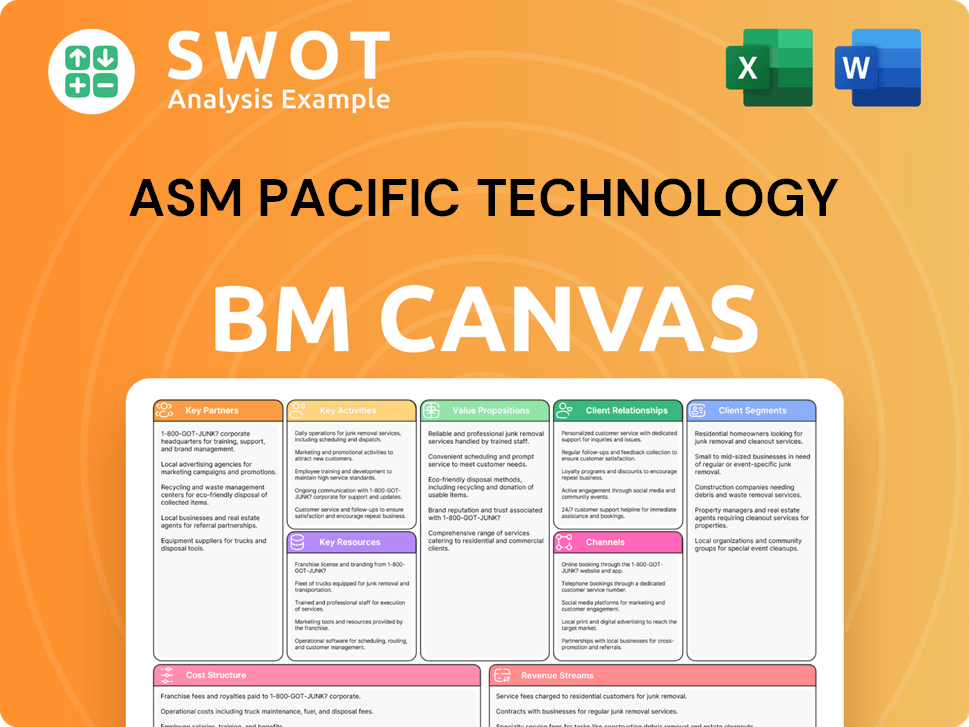
What Recent Changes Have Shaped ASM Pacific Technology’s Ownership Landscape?
Over the past few years, ASM Pacific Technology (ASM PT) has seen shifts in ownership discussions. In March 2023, there were reports of PAG considering an acquisition of ASM PT, and in October 2024, Kohlberg Kravis Roberts was reportedly exploring a potential acquisition. These developments signal possible moves towards private ownership for ASM PT. ASM International, however, has indicated it would not divest its remaining stake, despite these discussions. The company has also considered relisting on the Shanghai Stock Exchange STAR Market, potentially to achieve higher valuations.
ASM Pacific ownership has also been influenced by strategic partnerships and share buyback programs. In 2024, the company renewed its agreement with IBM for chiplet packaging technologies and formed a strategic partnership with TATA Electronics Private Limited. ASM International announced a new share buyback program of up to €150 million, commencing April 30, 2025, and expected to end by January 2026. As of June 2025, around 26.1% of this program had been repurchased.
The semiconductor market's robust performance also affects ASM Pacific Technology. The industry is expected to grow by 19% in 2024, with projected sales of US$697 billion in 2025, driven by increased demand for AI and high-performance computing. In 2024, ASM PT's revenue was HK$13.23 billion (US$1.69 billion), a 10% year-over-year decline, with a net profit of HK$342.2 million, a 51.9% decrease year-over-year. Despite these figures, the company plans to distribute a total dividend of HK$0.67 per share for 2024.
Discussions about acquisitions by private equity firms like PAG and Kohlberg Kravis Roberts have highlighted potential shifts in ASM Pacific ownership. ASM International's stance on not divesting its stake adds another layer to the ownership dynamics. The company has also explored strategic moves like relisting on the Shanghai Stock Exchange STAR Market.
ASM PT is focused on expanding its capabilities through partnerships and share buyback programs. Renewed agreements with IBM and a strategic partnership with TATA Electronics are examples of this. The share buyback program, initiated in 2025, aims to return value to shareholders.
The semiconductor market's growth, driven by AI and high-performance computing, benefits ASM PT. Despite a slight revenue decrease in 2024, the company's focus on advanced packaging solutions positions it well for future growth. The dividend distribution for 2024 shows continued commitment to shareholders.
ASM PT's 2024 revenue was HK$13.23 billion, with a net profit of HK$342.2 million. The company's strategic moves, including partnerships and share buybacks, aim to strengthen its position in the industry. These initiatives are key to navigating the dynamic market landscape.
ASM Pacific Technology Porter's Five Forces Analysis
- Covers All 5 Competitive Forces in Detail
- Structured for Consultants, Students, and Founders
- 100% Editable in Microsoft Word & Excel
- Instant Digital Download – Use Immediately
- Compatible with Mac & PC – Fully Unlocked
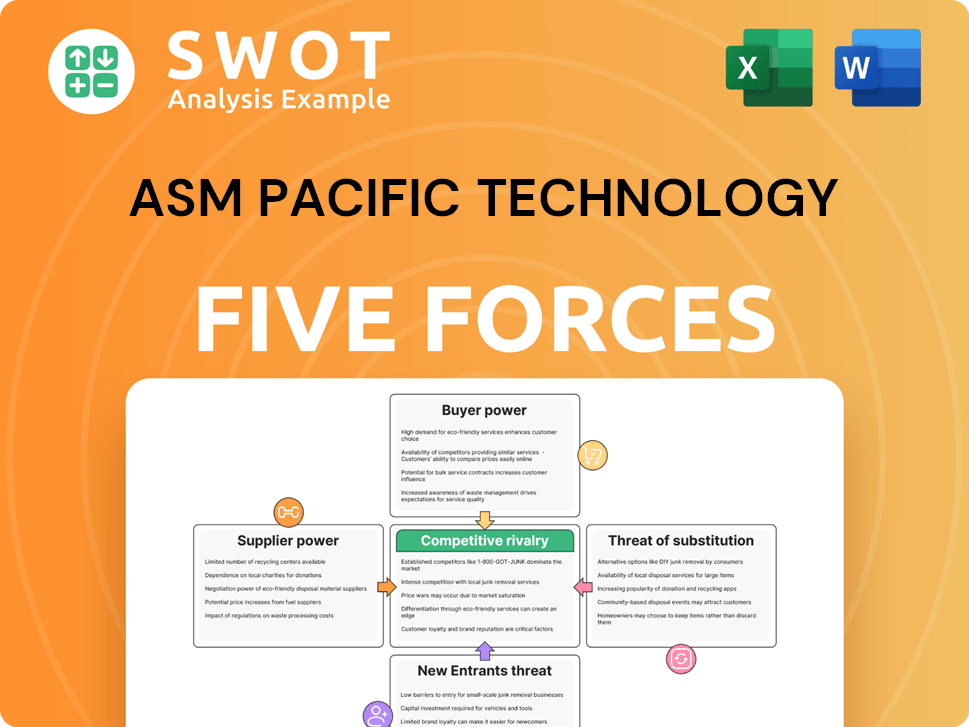
Related Blogs
- What are Mission Vision & Core Values of ASM Pacific Technology Company?
- What is Competitive Landscape of ASM Pacific Technology Company?
- What is Growth Strategy and Future Prospects of ASM Pacific Technology Company?
- How Does ASM Pacific Technology Company Work?
- What is Sales and Marketing Strategy of ASM Pacific Technology Company?
- What is Brief History of ASM Pacific Technology Company?
- What is Customer Demographics and Target Market of ASM Pacific Technology Company?
Disclaimer
All information, articles, and product details provided on this website are for general informational and educational purposes only. We do not claim any ownership over, nor do we intend to infringe upon, any trademarks, copyrights, logos, brand names, or other intellectual property mentioned or depicted on this site. Such intellectual property remains the property of its respective owners, and any references here are made solely for identification or informational purposes, without implying any affiliation, endorsement, or partnership.
We make no representations or warranties, express or implied, regarding the accuracy, completeness, or suitability of any content or products presented. Nothing on this website should be construed as legal, tax, investment, financial, medical, or other professional advice. In addition, no part of this site—including articles or product references—constitutes a solicitation, recommendation, endorsement, advertisement, or offer to buy or sell any securities, franchises, or other financial instruments, particularly in jurisdictions where such activity would be unlawful.
All content is of a general nature and may not address the specific circumstances of any individual or entity. It is not a substitute for professional advice or services. Any actions you take based on the information provided here are strictly at your own risk. You accept full responsibility for any decisions or outcomes arising from your use of this website and agree to release us from any liability in connection with your use of, or reliance upon, the content or products found herein.